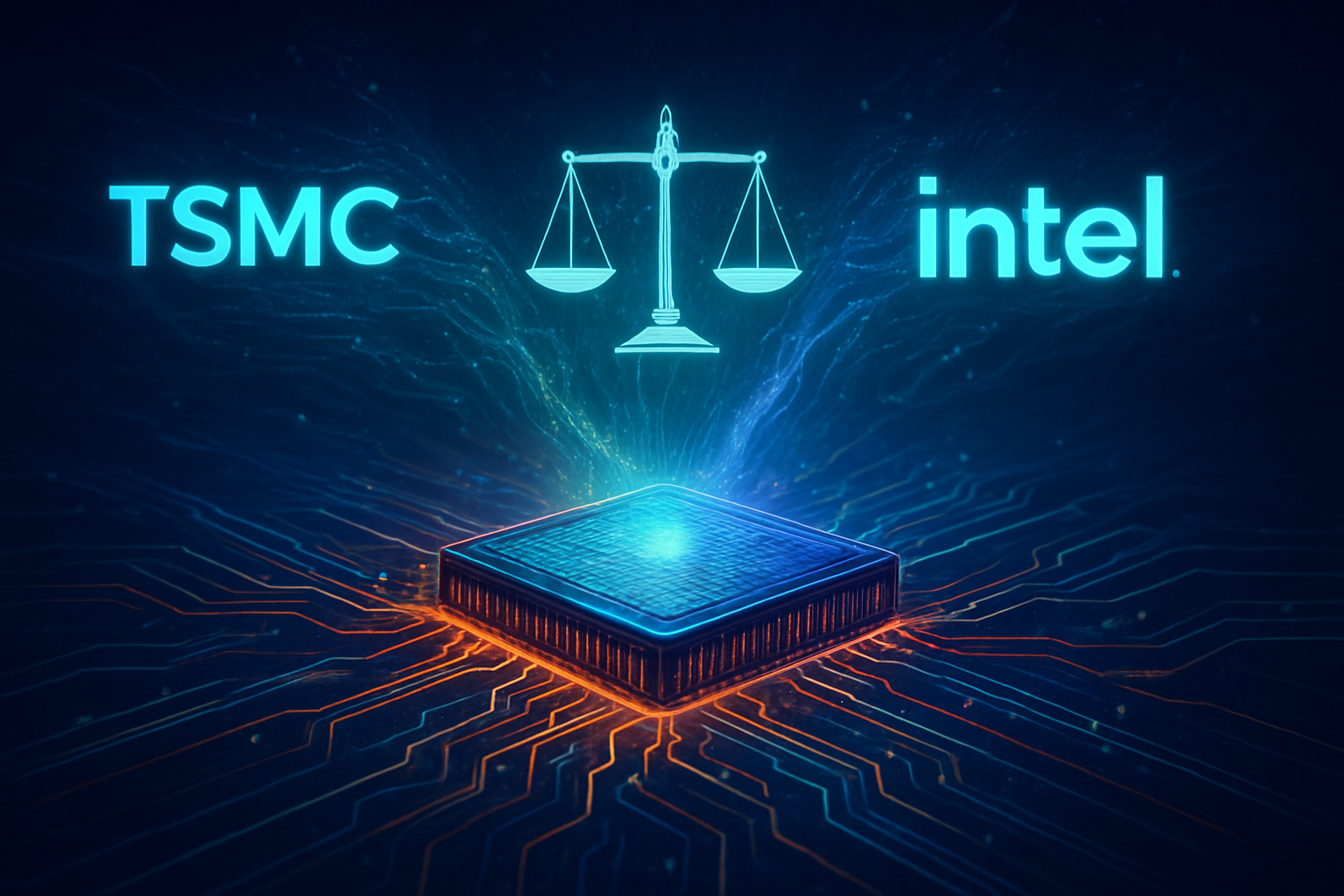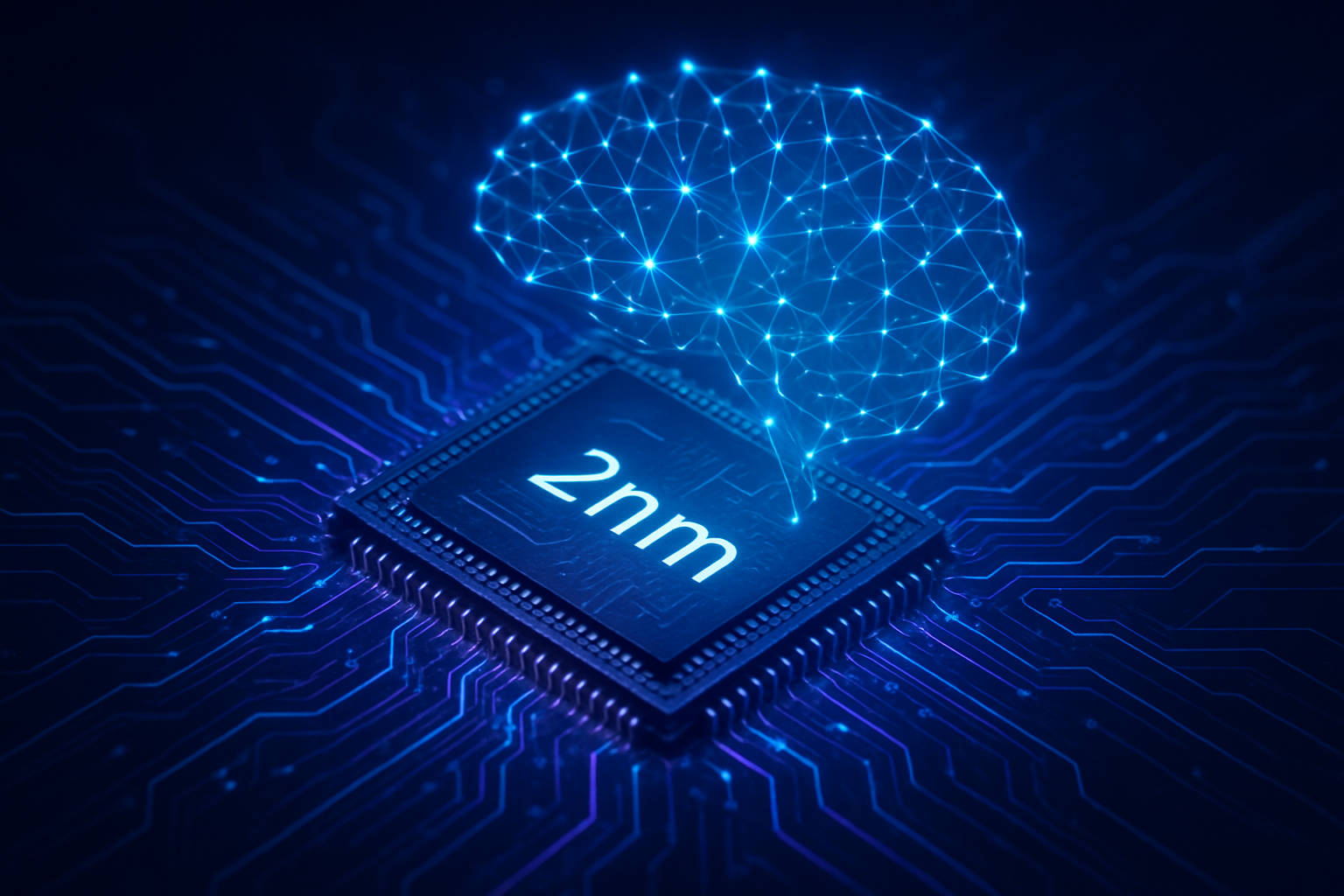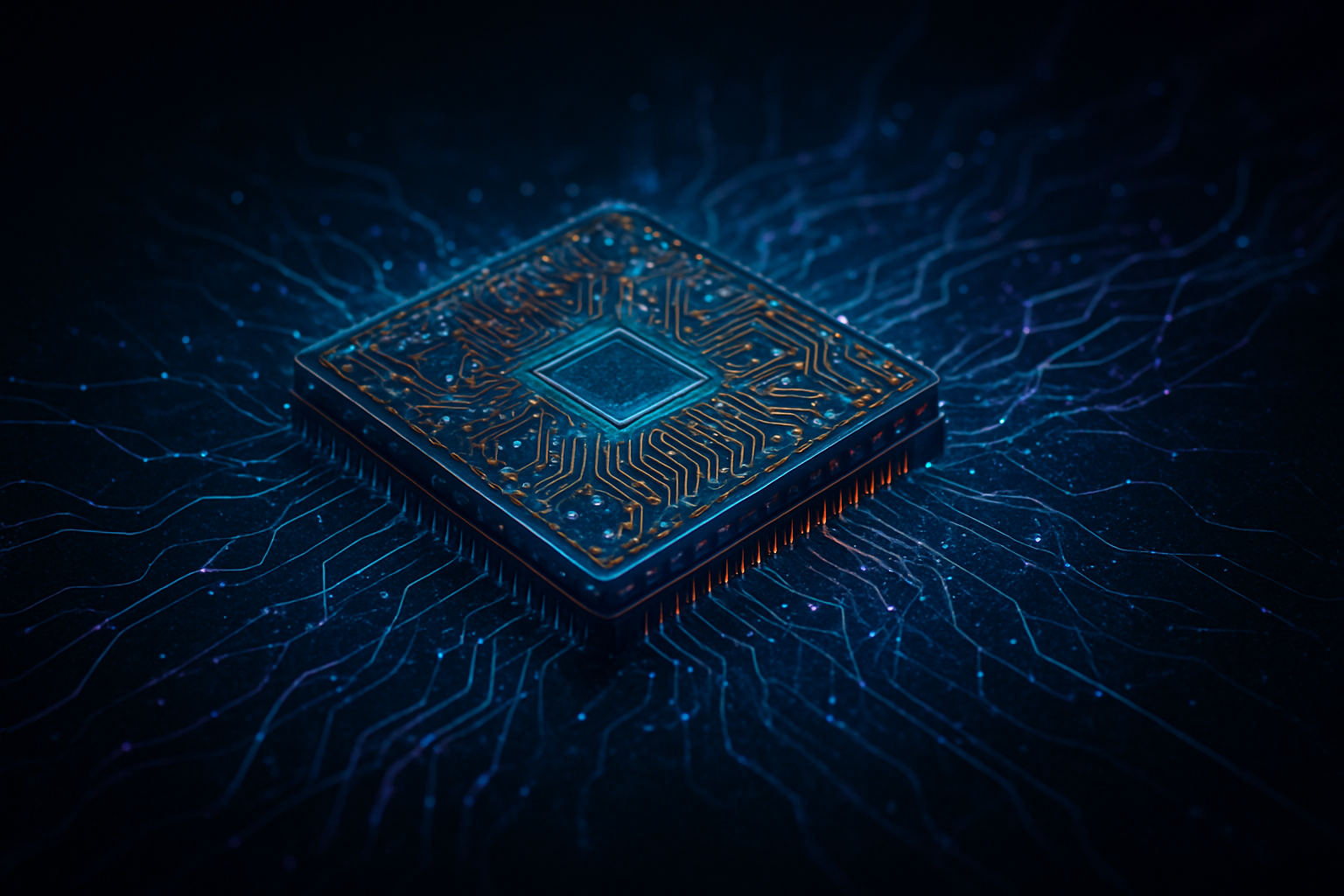The relentless march of artificial intelligence (AI) is reshaping industries, redefining possibilities, and demanding an unprecedented surge in computational power. At the heart of this revolution lies a symbiotic relationship with the semiconductor industry, where advancements in chip technology directly fuel AI's capabilities, and AI, in turn, drives the innovation cycle for new silicon. As of December 1, 2025, this intertwined destiny presents a compelling investment landscape, with leading semiconductor companies emerging as the foundational architects of the AI era.
This dynamic interplay has made the demand for specialized, high-performance, and energy-efficient chips more critical than ever. From training colossal neural networks to enabling real-time AI at the edge, the semiconductor industry is not merely a supplier but a co-creator of AI's future. Understanding this crucial connection is key to identifying the companies poised for significant growth in the years to come.
The Unbreakable Bond: How Silicon Powers Intelligence and Intelligence Refines Silicon
The intricate dance between AI and semiconductors is a testament to technological co-evolution. AI's burgeoning complexity, particularly with the advent of large language models (LLMs) and sophisticated machine learning algorithms, places immense demands on processing power, memory bandwidth, and energy efficiency. This insatiable appetite has pushed semiconductor manufacturers to innovate at an accelerated pace, leading to the development of specialized processors like Graphics Processing Units (GPUs), Tensor Processing Units (TPUs), Neural Processing Units (NPUs), and Application-Specific Integrated Circuits (ASICs), all meticulously engineered to handle AI workloads with unparalleled performance. Innovations in advanced lithography, 3D chip stacking, and heterogeneous integration are direct responses to AI's escalating requirements.
Conversely, these cutting-edge semiconductors are the very bedrock upon which advanced AI systems are built. They provide the computational muscle necessary for complex calculations and data processing at speeds previously unimaginable. Advances in process nodes, such as 3nm and 2nm technology, allow for an exponentially greater number of transistors to be packed onto a single chip, translating directly into the performance gains crucial for developing and deploying sophisticated AI. Moreover, semiconductors are pivotal in democratizing AI, extending its reach beyond data centers to "edge" devices like smartphones, autonomous vehicles, and IoT sensors, where real-time, local processing with minimal power consumption is paramount.
The relationship isn't one-sided; AI itself is becoming an indispensable tool within the semiconductor industry. AI-driven software is revolutionizing chip design by automating intricate layout generation, logic synthesis, and verification processes, significantly reducing development cycles and time-to-market. In manufacturing, AI-powered visual inspection systems can detect microscopic defects with far greater accuracy than human operators, boosting yield and minimizing waste. Furthermore, AI plays a critical role in real-time process control, optimizing manufacturing parameters, and enhancing supply chain management through advanced demand forecasting and inventory optimization. Initial reactions from the AI research community and industry experts consistently highlight this as a "ten-year AI cycle," emphasizing the long-term, foundational nature of this technological convergence.
Navigating the AI-Semiconductor Nexus: Companies Poised for Growth
The profound synergy between AI and semiconductors has created a fertile ground for companies at the forefront of this convergence. Several key players are not just riding the wave but actively shaping the future of AI through their silicon innovations. As of late 2025, these companies stand out for their market dominance, technological prowess, and strategic positioning.
NVIDIA (NASDAQ: NVDA) remains the undisputed titan in AI chips. Its GPUs and AI accelerators, particularly the A100 Tensor Core GPU and the newer Blackwell Ultra architecture (like the GB300 NVL72 rack-scale system), are the backbone of high-performance AI training and inference. NVIDIA's comprehensive ecosystem, anchored by its CUDA software platform, is deeply embedded in enterprise and sovereign AI initiatives globally, making it a default choice for many AI developers and data centers. The company's leadership in accelerated and AI computing directly benefits from the multi-year build-out of "AI factories," with analysts projecting substantial revenue growth driven by sustained demand for its cutting-edge chips.
Advanced Micro Devices (AMD) (NASDAQ: AMD) has emerged as a formidable challenger to NVIDIA, offering a robust portfolio of CPU, GPU, and AI accelerator products. Its EPYC processors deliver strong performance for data centers, including those running AI workloads. AMD's MI300 series is specifically designed for AI training, with a roadmap extending to the MI400 "Helios" racks for hyperscale applications, leveraging TSMC's advanced 3nm process. The company's ROCm software stack is also gaining traction as a credible, open-source alternative to CUDA, further strengthening its competitive stance. AMD views the current period as a "ten-year AI cycle," making significant strategic investments to capture a larger share of the AI chip market.
Intel (NASDAQ: INTC), a long-standing leader in CPUs, is aggressively expanding its footprint in AI accelerators. Unlike many of its competitors, Intel operates its own foundries, providing a distinct advantage in manufacturing control and supply chain resilience. Intel's Gaudi AI Accelerators, notably the Gaudi 3, are designed for deep learning training and inference in data centers, directly competing with offerings from NVIDIA and AMD. Furthermore, Intel is integrating AI acceleration capabilities into its Xeon processors for data centers and edge computing, aiming for greater efficiency and cost-effectiveness in LLM operations. The company's foundry division is actively manufacturing chips for external clients, signaling its ambition to become a major contract manufacturer in the AI era.
Taiwan Semiconductor Manufacturing Company (TSMC) (NYSE: TSM) is arguably the most critical enabler of the AI revolution, serving as the world's largest dedicated independent semiconductor foundry. TSMC manufactures the advanced chips for virtually all leading AI chip designers, including Apple, NVIDIA, and AMD. Its technological superiority in advanced process nodes (e.g., 3nm and below) is indispensable for producing the high-performance, energy-efficient chips demanded by AI systems. TSMC itself leverages AI in its operations to classify wafer defects and generate predictive maintenance charts, thereby enhancing yield and reducing downtime. The company projects its AI-related revenue to grow at a compound annual rate of 40% through 2029, underscoring the profound impact of AI demand on its business.
Qualcomm (NASDAQ: QCOM) is a pioneer in mobile system-on-chip (SoC) architectures and a leader in edge AI. Its Snapdragon AI processors are optimized for on-device AI in smartphones, autonomous vehicles, and various IoT devices. These chips combine high performance with low power consumption, enabling AI processing directly on devices without constant cloud connectivity. Qualcomm's strategic focus on on-device AI is crucial as AI extends beyond data centers to real-time, local applications, driving innovation in areas like personalized AI assistants, advanced robotics, and intelligent sensor networks. The company's strengths in processing power, memory solutions, and networking capabilities position it as a key player in the expanding AI landscape.
The Broader Implications: Reshaping the Global Tech Landscape
The profound link between AI and semiconductors extends far beyond individual company performance, fundamentally reshaping the broader AI landscape and global technological trends. This symbiotic relationship is the primary driver behind the acceleration of AI development, enabling increasingly sophisticated models and diverse applications that were once confined to science fiction. The concept of "AI factories" – massive data centers dedicated to training and deploying AI models – is rapidly becoming a reality, fueled by the continuous flow of advanced silicon.
The impacts are ubiquitous, touching every sector from healthcare and finance to manufacturing and entertainment. AI-powered diagnostics, personalized medicine, autonomous logistics, and hyper-realistic content creation are all direct beneficiaries of this technological convergence. However, this rapid advancement also brings potential concerns. The immense demand for cutting-edge chips raises questions about supply chain resilience, geopolitical stability, and the environmental footprint of large-scale AI infrastructure, particularly concerning energy consumption. The race for AI supremacy is also intensifying, drawing comparisons to previous technological gold rushes like the internet boom and the mobile revolution, but with potentially far greater societal implications.
This era represents a significant milestone, a foundational shift akin to the invention of the microprocessor itself. The ability to process vast amounts of data at unprecedented speeds is not just an incremental improvement; it's a paradigm shift that will unlock entirely new classes of intelligent systems and applications.
The Road Ahead: Future Developments and Uncharted Territories
The horizon for AI and semiconductor development is brimming with anticipated breakthroughs and transformative applications. In the near term, we can expect the continued miniaturization of process nodes, pushing towards 2nm and even 1nm technologies, which will further enhance chip performance and energy efficiency. Novel chip architectures, including specialized AI accelerators beyond current GPU designs and advancements in neuromorphic computing, which mimics the structure and function of the human brain, are also on the horizon. These innovations promise to deliver even greater computational power for AI while drastically reducing energy consumption.
Looking further out, the potential applications and use cases are staggering. Fully autonomous systems, from self-driving cars to intelligent robotic companions, will become more prevalent and capable. Personalized AI, tailored to individual needs and preferences, will seamlessly integrate into daily life, offering proactive assistance and intelligent insights. Advanced robotics and industrial automation, powered by increasingly intelligent edge AI, will revolutionize manufacturing and logistics. However, several challenges need to be addressed, including the continuous demand for greater power efficiency, the escalating costs associated with advanced chip manufacturing, and the global talent gap in AI research and semiconductor engineering. Experts predict that the "AI factory" model will continue to expand, leading to a proliferation of specialized AI hardware and a deepening integration of AI into every facet of technology.
A New Era Forged in Silicon and Intelligence
In summary, the current era marks a pivotal moment where the destinies of artificial intelligence and semiconductor technology are inextricably linked. The relentless pursuit of more powerful, efficient, and specialized chips is the engine driving AI's exponential growth, enabling breakthroughs that are rapidly transforming industries and societies. Conversely, AI is not only consuming these advanced chips but also actively contributing to their design and manufacturing, creating a self-reinforcing cycle of innovation.
This development is not merely significant; it is foundational for the next era of technological advancement. The companies highlighted – NVIDIA (NASDAQ: NVDA), Advanced Micro Devices (AMD) (NASDAQ: AMD), Intel (NASDAQ: INTC), Taiwan Semiconductor Manufacturing Company (TSMC) (NYSE: TSM), and Qualcomm (NASDAQ: QCOM) – are at the vanguard of this revolution, strategically positioned to capitalize on the surging demand for AI-enabling silicon. Their continuous innovation and market leadership make them crucial players to watch in the coming weeks and months. The long-term impact of this convergence will undoubtedly reshape global economies, redefine human-computer interaction, and usher in an age of pervasive intelligence.
This content is intended for informational purposes only and represents analysis of current AI developments.
TokenRing AI delivers enterprise-grade solutions for multi-agent AI workflow orchestration, AI-powered development tools, and seamless remote collaboration platforms.
For more information, visit https://www.tokenring.ai/.








